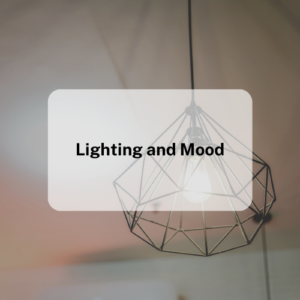How Interior Designing Affects Mental Health
Interior design can have a significant impact on our mental health, both positively and negatively. Our homes and workspaces are where we spend a large portion of our time, and the way they are designed can affect our mood, stress levels, and overall well-being. In this article, we will explore the ways in which interior designing can affect mental health and provide tips on how to create a space that promotes positive mental health.
Colors and Mood

One of the most important ways in which interior design affects mental health is through the use of color. Different colors can have a significant impact on our mood, and choosing the right colors for a space can make a big difference in how we feel when we are in that space.
For example, blue is known to have a calming effect and is often used in bedrooms and bathrooms to create a relaxing atmosphere. Green is another calming color that can help reduce stress and anxiety, making it a good choice for living rooms and other communal spaces.
On the other hand, red is a stimulating color that can increase heart rate and blood pressure, making it a poor choice for bedrooms or other spaces where relaxation is the goal. Similarly, yellow can be too stimulating for some people and may increase feelings of anxiety.
Lighting and Mood

In addition to color, lighting can also have a significant impact on our mood. Bright, harsh lighting can be overstimulating and increase feelings of stress and anxiety, while dimmer lighting can create a calming atmosphere.
Natural light is also important for our mental health. Exposure to sunlight has been linked to improved mood and increased energy levels, while a lack of natural light can lead to feelings of depression and fatigue.
To promote positive mental health, it’s important to choose lighting that is appropriate for the space and the activities that will take place there. In a bedroom, for example, dimmer lighting can help create a relaxing atmosphere that promotes sleep, while in a home office, bright lighting can help increase productivity.
Clutter and Mental Health

Clutter is another factor that can affect our mental health. A cluttered space can lead to feelings of stress and anxiety, making it difficult to focus or relax. In contrast, an organized and tidy space can promote feelings of calm and clarity.
To create a space that promotes positive mental health, it’s important to keep clutter to a minimum. This can be achieved through regular decluttering and organization. Choosing furniture and decor that serves a purpose and is not simply taking up space is also helpful.
Nature and Mental Health

Another way in which interior design can affect mental health is through the incorporation of nature. Exposure to nature has been shown to have a positive impact on mental health, reducing feelings of stress and anxiety and improving overall well-being.
To incorporate nature into your interior design, consider adding plants or other natural elements such as wood or stone. Indoor gardens or living walls can also be a great way to bring the outdoors in and promote positive mental health.
Comfort and Mental Health

Finally, comfort is an important factor to consider when designing a space that promotes positive mental health. Comfortable furniture and bedding can help promote restful sleep and relaxation, while uncomfortable furniture can increase feelings of stress and discomfort.
To create a comfortable space, it’s important to choose furniture that is both functional and comfortable. This may include investing in a high-quality mattress or comfortable seating that supports good posture. Soft, cozy fabrics such as blankets and pillows can also help create a warm and inviting atmosphere that promotes relaxation and positive mental health.
Tips for Creating a Space That Promotes Positive Mental Health

Now that we’ve explored some of the ways in which interior design can affect mental health, let’s take a look at some tips for creating a space that promotes positive mental health:
- Choose calming colors: Use calming colors such as blue and green to create a relaxing atmosphere in bedrooms, bathrooms, and other spaces where relaxation is the goal.
- Incorporate natural light: Whenever possible, maximize natural light in your space. This can be achieved by using sheer curtains, placing furniture in front of windows, or even installing skylights.
- Use appropriate lighting: Choose a light that is appropriate for the space and the activities that will take place there. In bedrooms, for example, dimmer lighting can help create a relaxing atmosphere that promotes sleep, while in home offices, bright lighting can help increase productivity.
- Keep clutter to a minimum: Regularly declutter and organize your space to keep it tidy and free of unnecessary items. This can help promote feelings of calm and clarity.
- Add natural elements: Incorporate natural elements such as plants, wood, and stone into your interior design to promote feelings of connection to nature and improve overall well-being.
- Choose comfortable furniture: Invest in high-quality, comfortable furniture and bedding that promotes restful sleep and relaxation. Soft, cozy fabrics such as blankets and pillows can also help create a warm and inviting atmosphere.
- Use scent to create a mood: Consider using essential oils or scented candles to create a relaxing or energizing atmosphere in your space.
- Create a designated relaxation space: Consider creating a designated space in your home where you can relax and unwind. This might be a meditation room, a cozy reading nook, or a dedicated space for yoga or other relaxation activities.
- Personalize your space: Add personal touches that reflect your personality and make you feel happy and relaxed. This might include family photos, artwork, or other meaningful items.
- Seek professional help if needed: If you are struggling with mental health issues, it’s important to seek professional help. A therapist or mental health professional can provide support and guidance as you work to improve your mental health.
The Importance of Mental Health in Interior Design
The impact of interior designing on mental health is an important consideration for designers and homeowners alike. Mental health is a crucial component of overall well-being, and creating a space that promotes positive mental health can have a significant impact on our quality of life.
Unfortunately, mental health is often overlooked in the design process. Many people focus solely on aesthetics or functionality when designing a space, without considering the impact it will have on their mental health.
To create a space that promotes positive mental health, it’s important to prioritize mental health in the design process. This might involve working with a mental health professional or incorporating elements into the design that promote mental well-being, such as natural light, calming colors, and comfortable furniture.